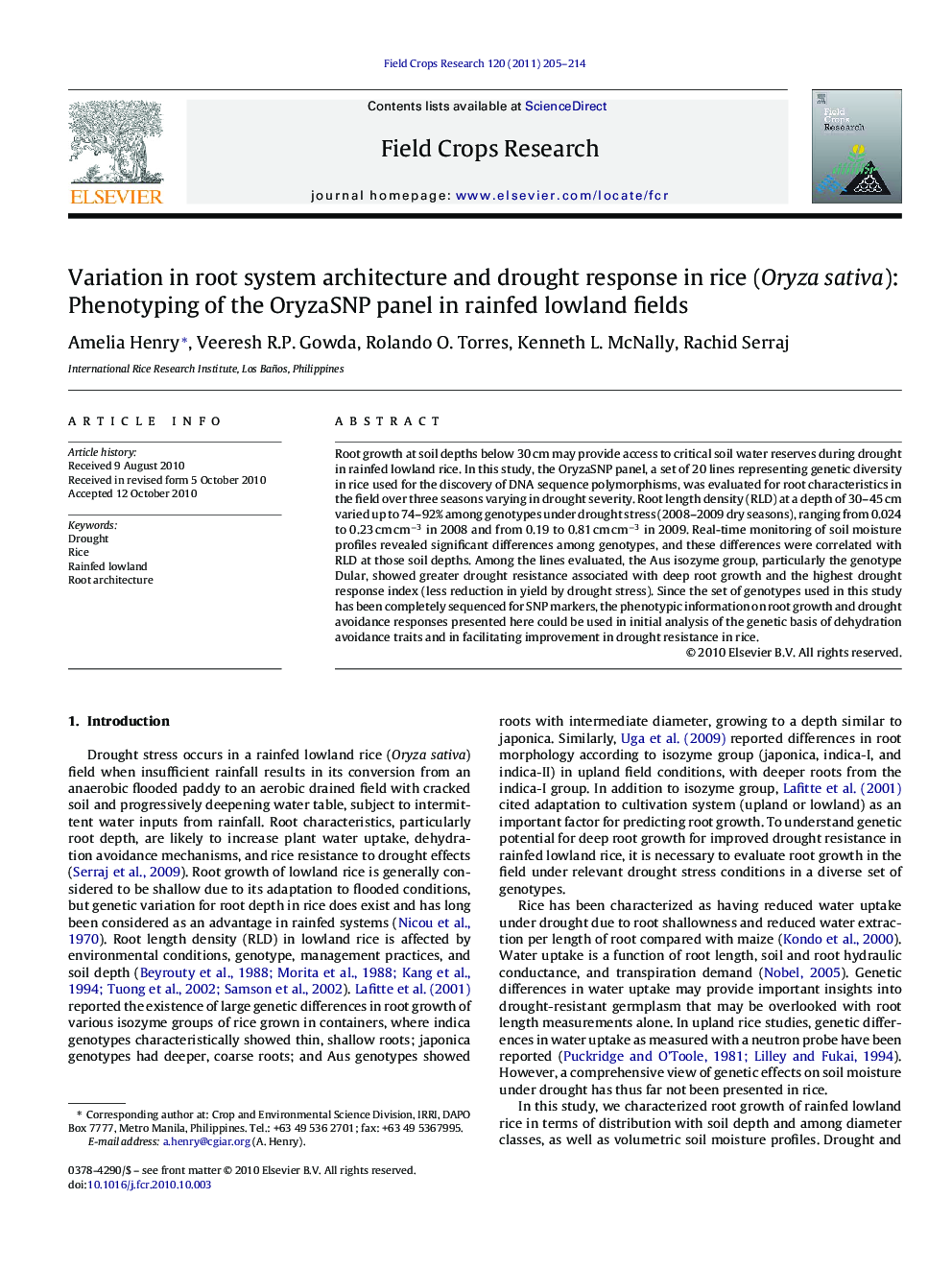| Article ID | Journal | Published Year | Pages | File Type |
|---|---|---|---|---|
| 4510843 | Field Crops Research | 2011 | 10 Pages |
Root growth at soil depths below 30 cm may provide access to critical soil water reserves during drought in rainfed lowland rice. In this study, the OryzaSNP panel, a set of 20 lines representing genetic diversity in rice used for the discovery of DNA sequence polymorphisms, was evaluated for root characteristics in the field over three seasons varying in drought severity. Root length density (RLD) at a depth of 30–45 cm varied up to 74–92% among genotypes under drought stress (2008–2009 dry seasons), ranging from 0.024 to 0.23 cm cm−3 in 2008 and from 0.19 to 0.81 cm cm−3 in 2009. Real-time monitoring of soil moisture profiles revealed significant differences among genotypes, and these differences were correlated with RLD at those soil depths. Among the lines evaluated, the Aus isozyme group, particularly the genotype Dular, showed greater drought resistance associated with deep root growth and the highest drought response index (less reduction in yield by drought stress). Since the set of genotypes used in this study has been completely sequenced for SNP markers, the phenotypic information on root growth and drought avoidance responses presented here could be used in initial analysis of the genetic basis of dehydration avoidance traits and in facilitating improvement in drought resistance in rice.
Research highlights▶ Genetic variation for deep root growth in drought-stressed rice was observed. ▶ Differences in root length density at depth were related to soil moisture levels. ▶ Canopy temperature was lower in lines with greater deep root growth under drought.
